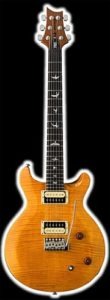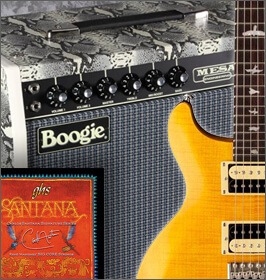
Up to this year (2011), there have basically been two types of Santana Tribute guitar models released by Paul Reed Smith (PRS). At the top of the line are the “high end” models; virtual copies of the guitars played by Carlos Santana himself. On the other end of the scale (no pun intended) were the “SE” models: guitars produced overseas, and available at a fraction of the cost. (“SE” stands for either “Student Edition” or “Standard Edition,” both of which signify the same thing.)
List price for the “high end” models: $3,000 to $8,500.
List price for the “SE” models: $400 to $750.
Of course, you would expect the high-end models to be substantially more expensive. That is the nature of guitar building. The problem is that the SE models weren’t really that much like the guitars Carlos plays. They were certainly viable instruments in their own right, and, probably, approved by Santana. But if you wanted to play an instrument like the Latin rock legend, you had to make a substantial investment. One that, for many players, is simply out of reach.
That has recently changed — to the great benefit of Santana fans everywhere.
New SE Santana Guitar
A few months ago, PRS released a new SE Santana model that, at least on first glance, is a LOT like Carlos’ own guitars. Body shape, finish, fretboards; the whole shebang. Not only that, but the list price, $795, seemed quite reasonable. When I got a look at this guitar (online), I was quite interested, for two reasons:
1) It appeared that PRS was making a version of Carlos Santana’s guitar that was accessible to a great many players that previously could not afford one; and
2) Selfishly, I was interested in my own right!
 Achieving Carlos Santana’s Sound
Achieving Carlos Santana’s Sound
There are several articles, on my blog, on how I achieve a sound very much like Carlos Santana’s tone, even though using different equipment altogether (this is in reference to my role in a Santana Tribute band). However, I’ve always been aware that using gear similar to Santana’s can help bring that tone even closer. It’s not just theory: for early Santana, I use a model very similar to the one he employed in the ’60s and ’70s.
In order to determine just how good this guitar was, I contacted the folks at PRS and asked if they would send me a guitar to review. (This is common practice in the media: a company ships its product to a journalist, who tests it out, then sends it back. I did it all the time when I was PR Director for Fender.) A very nice gentleman at PRS (Mark Quigley) said he thought that it would be possible, and that he’d get back to me.


